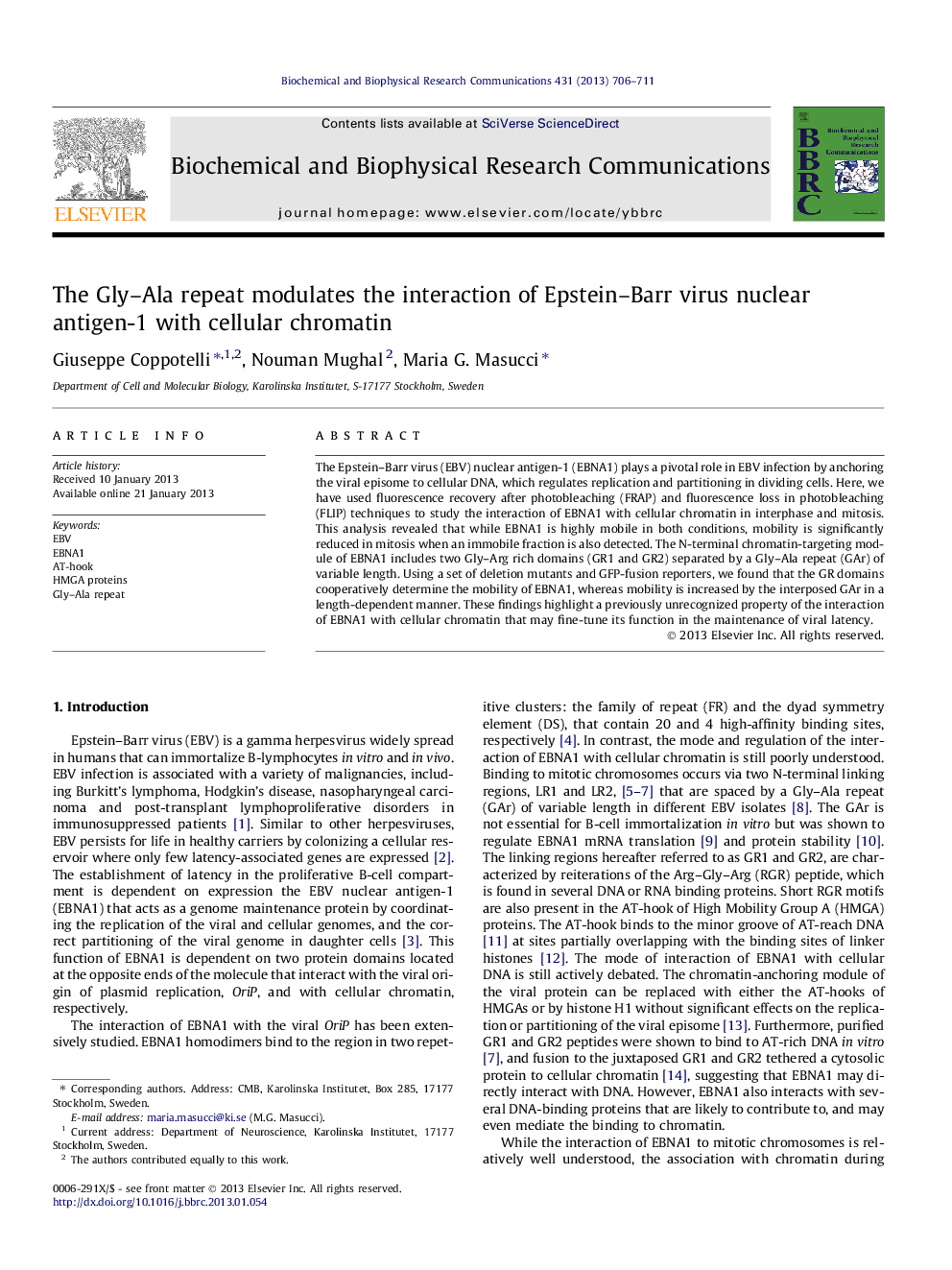| Article ID | Journal | Published Year | Pages | File Type |
|---|---|---|---|---|
| 1928968 | Biochemical and Biophysical Research Communications | 2013 | 6 Pages |
The Epstein–Barr virus (EBV) nuclear antigen-1 (EBNA1) plays a pivotal role in EBV infection by anchoring the viral episome to cellular DNA, which regulates replication and partitioning in dividing cells. Here, we have used fluorescence recovery after photobleaching (FRAP) and fluorescence loss in photobleaching (FLIP) techniques to study the interaction of EBNA1 with cellular chromatin in interphase and mitosis. This analysis revealed that while EBNA1 is highly mobile in both conditions, mobility is significantly reduced in mitosis when an immobile fraction is also detected. The N-terminal chromatin-targeting module of EBNA1 includes two Gly–Arg rich domains (GR1 and GR2) separated by a Gly–Ala repeat (GAr) of variable length. Using a set of deletion mutants and GFP-fusion reporters, we found that the GR domains cooperatively determine the mobility of EBNA1, whereas mobility is increased by the interposed GAr in a length-dependent manner. These findings highlight a previously unrecognized property of the interaction of EBNA1 with cellular chromatin that may fine-tune its function in the maintenance of viral latency.
► The Epstein–Barr virus, EBNA1, is a highly mobile protein on interphase and mitotic chromatin. ► EBNA1 mobility is determined by DNA-binding modules that resemble the AT-hooks of HMGA proteins. ► The EBNA1 AT-hooks are separated by a Gly–Ala repeat of variable length in different EBV isolates. ► The GAr regulate the mobility of EBNA1 in a length-dependent manner. ► These findings highlight a previously unrecognized property of EBNA1 that may fine-tune its function in viral latency.
